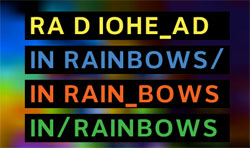Fourth quarter for the OpenNMS Group has always been crazy. We start off slow in first quarter and then slowly build until the end of the year when things go wild. Last year we did half of our yearly business in the last quarter. This year we did as much in our usually slow first quarter as we did in last year’s fourth, and it has just grown from there. We plow all of our excess revenue into the business, and we’ve just hired another top notch person to join our team (more on that in a few weeks when he starts).
Despite this success I am constantly told by those who know better that our business model sucks. Perhaps. If you come from the tradition of selling software, trying to figure out how to sell free software must be a little confusing. Still, that doesn’t prevent people from trying. Currently the most common model is to have a “free” part and proprietary part. The business plan is built heavily on the proprietary part, which is little different than purely commercial software.
The problem is that people fear change. For years the way to make money in software was to sell licenses. For years the way to make money in music was to get a big recording contract. In exchange for a huge cut of revenues, record companies would produce, promote and sell music. Their main advantage was the distribution channel. With the Internet, the problems of distribution have gone away.
I like music, but I’ve found lately that most of the new music I listen to tends to come from artists I learn about on the Internet. The music coming out of the traditional channels – with more emphasis on how the artist looks on MTV instead of on the music – has me searching for something decent to listen to. If I want to look at scantily clad beautiful people, there are websites for that. (grin)
While the music industry blames its woes on piracy and has resorted to suing its customers, I think it has more to do with the fact that the model is changing, and it is no longer possible for the record companies to maintain the levels of profits they have had in the past.
Think about it. How many times have I purchased Dark Side of the Moon? My first car (a 1972 Delta 88 Olds with a 455 V8) had an 8 track player. Then I bought the album on vinyl. I liked it so much I bought the Mobile Fidelity Sound Labs master. Then I bought the CD when it was first available, and finally the re-mastered CD a few years later.
So I paid for the same content 5 times. I’m sure that money went somewhere, but I am willing to bet the bulk of it did not go to Pink Floyd.
When CDs first came out, they were pretty expensive. Now I can burn one on my computer for something like 3 cents. Yet CDs are still priced about the same (US$15-US$20) as they were in 1984. That can only mean that since production costs are lower profits must be higher.

But change is coming. Today I got In Rainbows, the latest album from Radiohead. It is a really good album, but almost as good was how I bought it. I went to the website (which was a bit slow due to traffic), added the download to my cart, and then it asked me how much I wanted to pay. Zero was an option. If you are distributing DRM-free music why not have zero as an option? According to the music industry, there should only be, what, one download right? Without DRM all of the pirate kiddies are just gonna steal it.
Wrong.
I paid £5. Ben paid £5. I have a couple of other friends who also bought it. It was about US$1 per song, which is what you pay on iTunes, but I can play it on my computer, on the Phatbox in my car, and on my phone without worrying about DRM. Sure I am certain that there will be some theft of it, but with almost all of the money going directly to the band I think Radiohead is going to make more money with this album than any of their others, which should encourage them to continue to make great music.
The music industry is scared. They should be. No one really needs them anymore. I think the software industry should be scared as well. Companies have wised-up to the idea of “per server” licenses and proprietary lock-in. They are looking for a change.
OpenNMS is betting on that change by providing high quality, truly free/libre software. The accepted software model is to get a bunch of investment and market the hell out of your company. We are using the even more traditional model of “spend less than you earn”. Being cash positive may suck as a business plan if your goal is to sell out within five years, but it means we’ll be around after those five years, with an even stronger community and a stronger offering. To me it’s like beautiful music, and with OpenNMS we hope to prove, like Radiohead, that beautiful music doesn’t have to come with strings attached.





